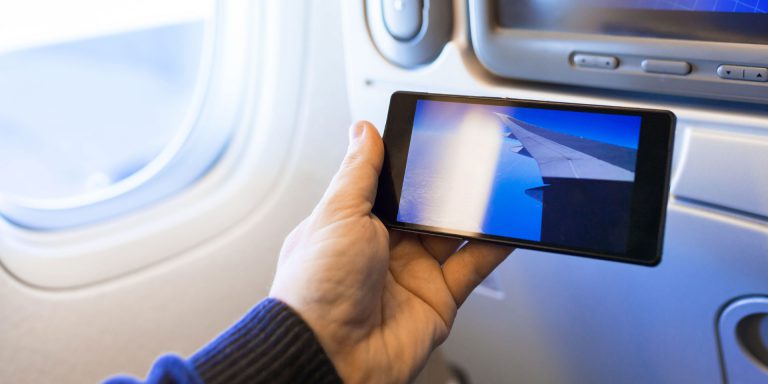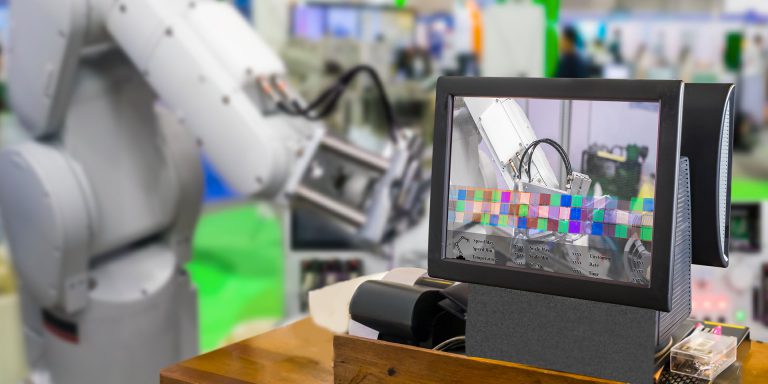The aeronautical industry is ready for the digital revolution
With close to 6 billion annual passengers expected by 2030[1], up from 3.7 billion today, the aeronautical industry is at a crossroads. It faces multiple challenges, such as limiting its environmental impact and energy costs, increased safety requirements for both passengers and crew members, and the entrance of new competitors into the market who are redefining the established business models, such as low-cost carriers and aircraft leasing companies.
Responding to these new challenges will involve a greater use of digital technologies, which are now reaching sufficient maturity for industrial use. Like other industries, aircraft manufacturers are ready to make their digital revolution in order to satisfy the changing needs of the airlines and their passengers.
The Factory 4.0 and e-commerce are here to improve the industry’s productivity
The rapid expansion of air transport presents a challenge for the aeronautical industry in terms of productivity. Estimates from Flight Fleet Forecast 2016-2035 suggest the size of the global commercial fleet could reach almost 50,000 aircraft by 2035, compared to 19,500 today. While aircraft order backlogs now represent 8 years of production, growing demand is placing intense pressure on all players in the industry. Meeting this challenge will therefore require an increased emphasis on R&D and innovation.
“the size of the global commercial fleet could reach almost 50,000 aircraft by 2035, compared to 19,500 today”
Flight Fleet Forecast 2016-2035
Thanks to the digital revolution, engineering solutions known as “Factory 4.0” can increase productivity along the production line. For example, 3D printing manufactures complex parts through precise processes to reduce production time. This represents considerable savings in terms of time and material waste. Technologies like these are already used at Altran, which is now capable of 3D printing airplane seats.
The overall improvement in production efficiency also requires optimizing inventory management and supply chain management–all the way from the subcontractors to the airlines. Deploying B2B e-commerce technologies streamlines both inventory and supply chain flow, which saves time and resources.
Internet of Things and virtual reality: changing the processes of the aeronautical industry
The digital revolution presents opportunities not only to increase productivity, but also to increase the safety of air transportation. Aeronautical maintenance outfits are increasingly using digital technologies, such as the Internet of Things. Connecting sensors to different parts of the plane creates a network to keep teams informed about each part’s condition. This technology can be combined with the use of drones, notably by Airbus, which make it possible to easily check for problems on the plane from all angles. In addition to these new monitoring technologies, the use of Big Data and information derived from artificial intelligence can automate data processing and enable rapid maintenance solutions.
Beyond the improvement of production processes, the introduction of new digital technologies will force the evolution of each step in the aeronautical value chain. For example, augmented reality makes the design process better and faster. It provides valuable assistance to engineers and designers who are working to increase the capacity of the aircraft while making it lighter and safer. Virtual reality makes it possible to perfect the design of even the smallest details without going through the prototype stage. Altran has built a prototype, called “Sparkle,” showcasing these technologies: it is a virtual reality device with sensors that helps design new production plants by anticipating the future difficulties and defects.
“Digitisation will accelerate in the coming years in order to adapt to the increasing demands of the aviation market”
Dominique Cerutti, Altran CEO
These new technologies, while currently experimental, are at the dawn of mass usage. Digitisation will accelerate in the coming years in order to adapt to the increasing demands of the aviation market. The aeronautical industry is ready to respond to this challenge by building on its culture of innovation, as well as responding to new competitors and startups who are upsetting traditional methods and reshaping the industry.
[1] Estimations according to the National Federation of Commercial Aviation








